This is a poem I wrote about my experience growing up nonbinary and having the ability to put it into words, along with my relationship with my father. The video is composed of a recording of my poem Daddy Issues put to a slideshow if pictures of me growing up to help show that while I may look like a little girl but, I was always nonbinary.
transgender studies
Recommendations for Trans Attractions for Non Queer Partners
As the title says, this is an amateur’s guide for trans femmes/women (or anybody in that proximity, myself and trans femme) attracted cis-gendered men. No, I won’t be getting into queer identity terms. You can quickly google those. Although! I will provide a link to a glossary and suggest you look into the terms gynosexual, anrodesual, and skoliosexual. This isn’t to say they are the most “efficient” terms, but they are a good starting point to explore terms that fit the bill. I agree that labels can be exhausting, but sometimes finding a name for it feels good. It makes it tangible, possible, and accurate. And to expand on that feeling, I will be providing resources in the hopes that they will aid in your journey of exploring your sexual/romantic attraction/s! It might seem like So, with that being said…
Just take the pieces that feel good, and you can leave the rest behind. 🙂

This video gives a quick rundown of trans attraction, and is pretty accessible to those who learn the language of queer identity labels- we’ll call them.
The presenter is Dr. Wendy Ashley who has a Doctorate in Clinical Psychology. She has practiced therapy and counseling for over 25 years.
I figured this would be a great start to your journey.
Cute, you thought you were gonna get away with having to read. I know this book is ancient, but sometimes it’s helpful to just get down to the basics. The past usually tends to figure out the basics for us.
This book is essentially a curation of academic articles that highlight the prominent concerns and challenges with men’s sexuality. Writing is pretty accessible, FYI. And through my lived-in-experience, it seems to me that those concerns and challenges are exacerbated when the relationship is with a trans femme/women person
Concerns and challenges include, but are not limited to…
– Nonrelational sex
– The Centerfold Syndrome (one of my faves!)
– Appearance obsession
– Don Juanism (ooh, this one’s good too.)
– Sex as a commodity
– Sexual Harassment and rape
– Male gender socialization
– Perpetration of sexual abuse
– and more!
As suggested by the concepts and topics discussed in this book, I should give a…
TRIGGER WARNING!
Friendly reminders to be gentle with yourselves, lovies. ❤


And so now, I present…
Box No. 512 Podcast: Grown Black Women Talk hosted by Aeon and The Lioness.
They are both trans women and speak the truths they have acquired throughout their lived experiences.
to connect the dots between Men and Sex,
I RECOMMEND THE EPISODES:
– Trans Women as the Default
– Yes Cis, That Was Transphobic
The episode should be listened to in order, and I believe they are the second and third episodes.
I believe they’ve stopped doing it for a minute, but it’s a great podcast!
So! Trans Bodies, Trans Selves. This is basically the bible for trans people that pertains to anything and everything. An exagaration onviously, but it’s a good one!
Each chapter explores a diffeent issue within the limitless potentialities of what a trans* person’s life can look like. Issues and guidarnce all the way from medical transitions to relationships to race to etc!
It’ll be helpful to have something aroung when you discover a trans* something that you don’t know about. It gets really laborous if you turn to your tran* partner to educate about everything.
Look how cute the cover for the second edition is! I have the first edition, and this is like the first time I’m actully buying an additional edition of the same book.

So there you have it; these books helped me understand the perspectives and considerations of wanting to be in partnership with cis-meen, and that’s alright. There is definitely a shortage of perspectives Also, there are so many books about the trans experience out there. Give it a google, give it a browse. Good luck on your journey! TRANS* LOVE FOREVER.
Honoring Rita Hester and The First Trans Day of Remembrance

TW: mentions murder and violent acts committed against Trans and Queer identities
Rita Hester was a friend, a sister, and a daughter who was deeply loved by those closest to her. She loved to wear black and purple and enjoyed spending her nights dancing and performing at local clubs and rock shows in Boston such as Jacques a local queer bar. Rita even traveled to Greece regularly to perform and bask in the sunshine. She was a beautiful, brave, and resilient woman who deserved to live a long and glamorous life sharing her talents and experiences with the world.
Rita Hester was a Black Trans Woman who was murdered two days before her 35th birthday on November 28th, 1998. This act of transphobic violence which resulted in the death of Rita Hester sparked the organization of the first Transgender Day of Remeberance on November 28th, 1999, exactly a year after she had passed. Rita Hester is just one of too many Black Trans Women who have been murdered through acts of racial and gendered violence whose stories are not being told creating invisibility and lack of awareness to the high rates of hate violence committed against them. Black Trans Women experience discrimination and violence at disportionate rates to the rest of the queer community. Rita was one of 13 trans people murdered in 1998. Hester was found in her apartment after being stabbed 20 times by an unknown person. She died from cardiac arrest before getting to the hospital after police were slow to respond. The story of her murder never saw national headlines like the infamous murder of Matthew Shepard which occurred just a few weeks prior. Which showed which lives were valued by the media and the gay and lesbian political agenda. The local newspapers such as The Boston Globe and The Herald who covered the story continuously misgendered and dead named Rita calling her a “cross dressing man” showing little respect for her identity. When her friends went to the reporter about the transphobic language used the reporter (Ann Donlan) went back and changed the article but continued to not respect her pronouns because of her editors decision. The media focused on her career as a sex worker and links to the marijuana trade in Boston including two prostitution charges from 1993 in their coverage. Resulting in much victim blaming of Rita for her own murder. Further pushing forward white supremacist and neoliberal rhetorics about sex work and selling drugs as punishable crimes for “bad people” instead of recognizing the racist and classist systems of power that work around criminalizing and policing black bodies creating continuous cycles of poverty and incarceration. Not to mention the difficulty of transgender individuals to access gender affirming care, identification, and to receive employment that includes benefits and fair pay. A vigil was organized by transgender advocate Gwendolyn Ann Smith in Allston and held in Rita’s honor which was attended by over 200 people and is now known as the very first Transgender Day of Remembrance. Reverend Irene Monroe who was a speaker at the vigil shared,
“Rita was renowned and infamous, everybody knew her, especially in the trans community and in the African-American LGBTQ communities.”
Rita’s Mother, Kathleen who also spoke at the vigil left not one eye in the room dry when she cried out,
“I would have gladly died for you, Rita. I would have taken the stabs and told you to run. I loved you.”
My heart breaks and falls to my stomach as many do when I read this quote because no parent should have to know the pain of burying their child. It’s cruel and unfair that they did not get more time together. Unlike many trans or gender nonconforming folks Rita’s mother along with her younger sister, Diana respected her identity and always called her Rita even if they didn’t always get her pronouns right. They were always supportive and loving even when Rita started socially transitioning during her youth which is uncommon due to the lack of autonomy most families and society gives transgender and gender nonconforming young people.
Since the vigil there has been 23 annual Trans Day of Remembrances since 1999. Held on November 20th of each month. Founder Gwendolyn Ann Smith says,
“Transgender Day of Remembrance seeks to highlight the losses we face due to anti-transgender bigotry and violence. I am no stranger to the need to fight for our rights, and the right to simply exist is first and foremost. With so many seeking to erase transgender people — sometimes in the most brutal ways possible — it is vitally important that those we lose are remembered, and that we continue to fight for justice.”
I wish that I had more to share about the love and light that Rita Hester was to her friends, family, and community and her life before her death. I wish there was more to the little description I have given. Rita Hester deserves to be remembered for her life not just her death. I hope that what I have found in my research of her will spark interest in some to hopefully work to further uncover the life that was Rita Hester’s. Rita’s murder is still unsolved to this day. Rita lives on as a reminder to us that no one is free until Black Trans Women are free to live and lead. Organizations who serve marginalized identities must continue to work to center the voices and lived experiences of Black Trans Women. Providing support and aid for them in the move towards a transfeminist framework for all social justice issues.
Black Trans Lives Matter

Resources
Darling, Laura. “Rita Hester: The Beginning of the Transgender Day of Remembrance.” Making Queer History, Making Queer History, 3 Nov. 2022, https://www.makingqueerhistory.com/articles/2016/12/20/rita-hester-the-beginning-of-the-transgender-day-of-remembrance.
Nangeroni, Nancy. Rita Hester’s Murder and the Language of Respect . https://www.masstpc.org/wp-content/uploads/Rita-Hesters-Murder-and-the-Language-of-Respect.pdf.
Riedel, Samantha. “Remembering Rita Hester, Who Changed What It Means to Remember Trans Lives.” Them, 31 Mar. 2022, https://www.them.us/story/rita-hester-trans-remembrance-visibility-memorial.
Roberts, Monica. “Rita’s Story.” TransGriot, 19 Nov. 2007, https://transgriot.blogspot.com/2007/11/ritas-story.html.
“Transgender Day of Remembrance.” GLAAD, 13 Nov. 2022, https://www.glaad.org/tdor.
Trans In Rural Wyoming: An interview with my sister
Ashlynn N. Robbins (2018)
Ashlynn and I were both born and raised in a town in Wyoming. This was a very small, very conservative town in a very low populated state. In my opinion, both of our lives would have been completely different had we not grown up where we did. I want to acknowledge that the kind of support that came from our family and the type of friends that both of us were able to find made my sister and I extremely lucky. However, that doesn’t erase anything that my sister or I have been through. There isn’t really a space for talking about these kinds of things, so most of the queer and trans related trauma that LGBTQIA+ members experience is dealt with alone. After moving to cities, I discovered that a lot of people don’t fully understand the lack of queer resources in rural areas unless they personally have lived in a rural community. For this project, I really just wanted to give my sister that space to talk about her personal experiences and opinions on being trans in a rural community. The following is an interview between my sister and I, where I ask her some questions about being trans in rural Wyoming.
Continue readingI began this research looking for collections of writing (essays, critiques, panel contributions, memoir, poetry) from people are trans or gender nonconforming and incarcerated. Despite finding a few great sites committed to archiving work created by people who are incarcerated, I had very little luck finding work by trans prisoners and inmates. The filters on the sites didn’t offer any options for “queer” or “transgender”, and I quickly realized that the only pieces of writing I would find from searching for keywords are ones that have been transcribed by the site itself or from visitors. Only writings that have been properly titled and transcribed are searchable, which made me wonder how many untitled, untranscribed pieces of trans literature are out there. This shows a historical and current lack of prioritization in cataloguing trans prisoners’ and inmates’ creative and intellectual work. I was frustrated at my lack of results, and not ready to delve into archives and make transcriptions myself. This is why I was so excited to find the Bent Bars Project Online Resource Library. This Britain-based project has links to resources for queer and trans people who are incarcerated around the world, and I wanted to share a little bit of what it has to offer.
Lockdown is a 24-page zine made in 2008 Berlin, Germany covering how people who are trans or gender nonconforming are affected by state violence via the prison system. This collection of writing is meant to expose how the prison system is able to repress, abuse, and dehumanize people who are incarcerated and how “strategies of segregation,” as they call it, are used to consistently harm queer and trans people. This zine offers information on the situation in Germany and offers strategies in confronting, coping with, and resisting many forms of institutionalized violence. One piece discusses “solidarity as a weapon” in resisting this violence; another page has a few quotes about personal experiences and strategies:
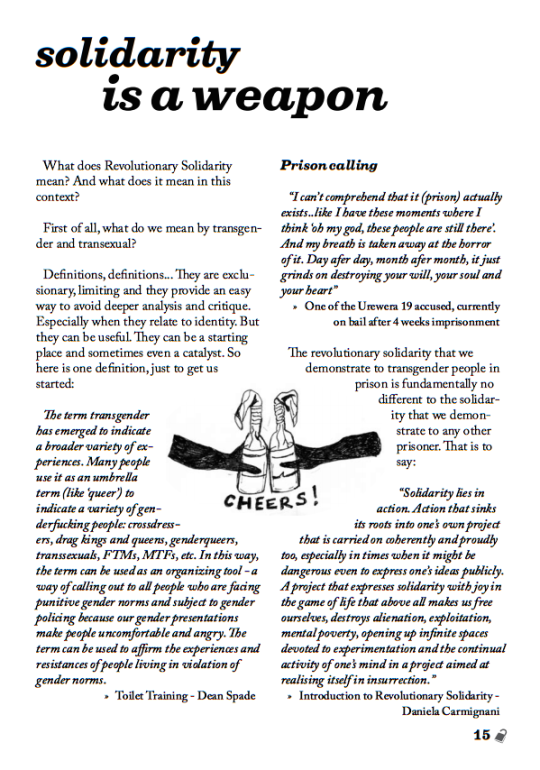
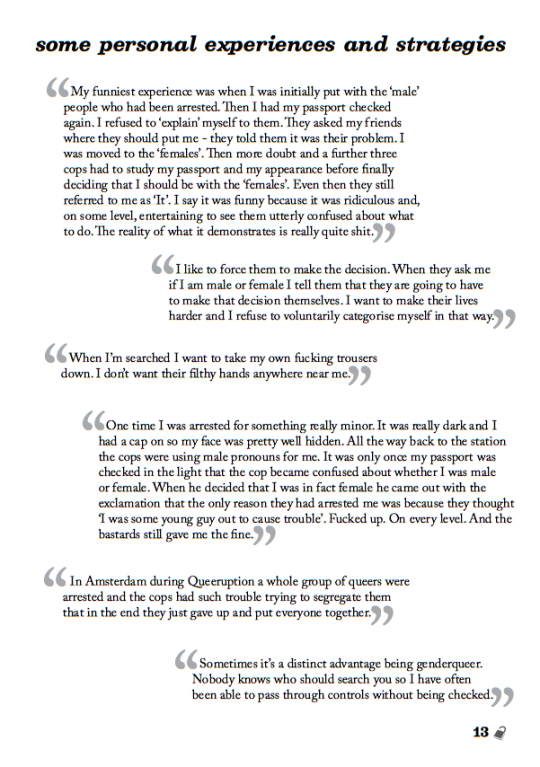
At the end of this section, there is a sentence in bold reading, “And one more thing to hold in your heart,” below it is the quote:
“We see solidarity as a way of feeling oneself accomplice, of deriving reciprocal pleasure and in no way do we consider it a duty or sacrifice in the name of the ‘good and sacred cause’ because it is not of our cause, but of our selves.”
Revolutionary Solidarity – Pierleone Porcu
Imprisoned Pride is an 18-page zine created in the Summer of 2008 which discusses the ways that queer and trans people in prison are written out of mainstream gay and queer movements, discourses, and celebrations. This zine is a transcription of a panel organized by the Prisoner Correspondence Project in Montreal, Canada. The panel was created with three goals in mind: to organize an event grounded in the voices of queer, trans, and gender nonconforming people on the inside; to address why prisoners and inmates are not part of queer organizing; and to confront the invisibility of prisons, and thus prisoners, in Canada as a whole. The Prisoner Correspondence Project distributed a list of prompts to queer and trans people who are incarcerated and used their answers to spark a discussion about how people relate to the concept of pride, and perhaps how to make pride as a concept more accessible and inclusive to people who are in prison. Here are prompts that were used:

The last zine is an issue from Gender Anarky published in Spring of 2009. Gender Anarky is a zine created solely by trans women and gender nonconforming people who are incarcerated, and it’s published at random, from prison. This issue acknowledges the late Dee Farmer, “a very dedicated queen to the human rights of us girls in men’s prisons, and her tragic death that resulted from it.” They explicitly state that they “do not engage politically,” rather, they are trans women in prison fighting tooth and nail for life-saving, gender-affirming health care and their own humanity. They discuss prison-based versus social-based activism for the rights of trans women in prison– and how the latter often results in people on the outside centering themselves and becoming the face of the movement. Here is an excerpt of this discussion that I think is valuable for those of us passionate about prisoner rights and prison abolition:
“INASMUCH AS SOME TRANSSEXUAL WOMEN ON THE STREET WHO HAVE BEEN IN PRISON SPEAK ON THE EXPERIENCE OF TRANSSEXUAL WOMEN IN THE PRISONS IN CALLING ATTENTION TO OUR FIGHT, NO ONE CAN REPRESENT US BUT WE OURSELVES, FROM PRISON. REPRESENTATION TAKES PLACE AT THE LEVEL OF THE IMMEDIATE ENVIRONMENT. THIS IS RADICAL, WHICH MEANS “GOING TO THE ROOT.”
WHEN INDIVIDUALS ON THE STREET ATTEMPT TO REPRESENT US WHO ARE IN THE PRISONS, THEY TEND TO PUT THEMSELVES AT THE CENTER AND ABOVE US, AND OF OUR CAUSE, AND ARE BEYOND OUR CONTROL. THIS ESCALATES AND CREATES A CONFLICT OF INTEREST. WE HAVE SEEN IT MANY TIMES. IT CONTINUES TO THIS DAY.
SOCIAL GROUPS AND SOCIAL PEOPLE TEND TO PUT THESE TYPE OF INDIVIDUALS ON A STAGE TO PROJECT AN IMAGE OF BEING A SPOKESPERSON FOR US BACK HERE WHO ARE BLEEDING AND CRYING IN THE GUTTER, FIGHTING WITH ALL OF OUR MIGHT– AND IN SOME CASES WITH OUR VERY LIVES (DEE FARMER) – FOR OUR WOMANHOOD. OUR VERY LIVES ARE ON THE LINE. THEY BECOME CELEBRITIES. WE DON’T KNOW THEM.”
Here also is a poem titled “Ice Lady” by Amazon-Kabuki, left purposely undated:
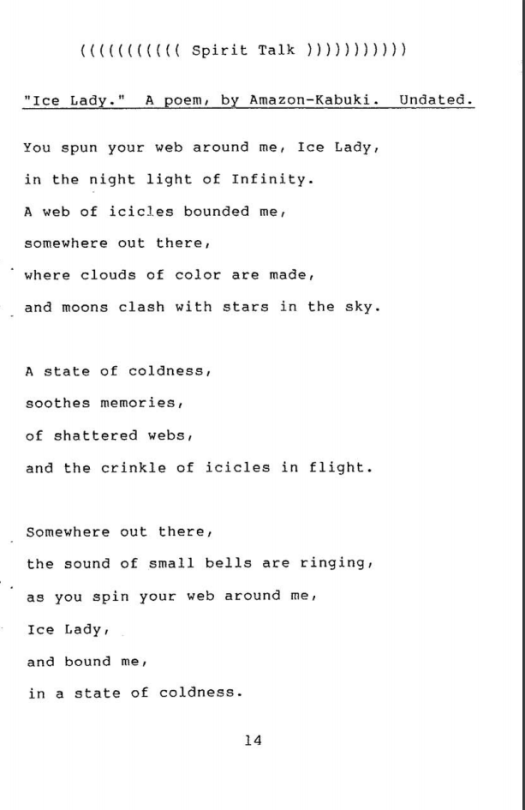
More cool sources:
Why prison abolition is a queer issue
Tips for prison doctors for providing pap smears to incarcerated trans men
(by sara abrams)

This Photo is a timeline including Unspoken History of Trans Liberation. I tried to only incorporate key events within the timeline to keep it short and influential. One thing that stood out to me the most while doing this project was that the last thing I could find liberation wise was in 2015! -Jamie Knopf
A visual history of eroticized genders in Thailand by Renee Owens
Resistance and Body Joy: An Art Series
A Project by Eli Smith
The
normative body is an image that is fed to United States citizens through media,
culture, and the current context of society and who holds power within it. Often,
this body is illustrated as a white, cisgender, heterosexual, able, thin body –
a body standard that very few people can meet. When it comes to the transgender
body, there is an especially high instance of shame associated with the reveal
of this body in gendered spaces that expect cisgenderism. When the trans body can
be shown, it is often in the context of pornography, nonconsensual exposure, or
violence against transgender and gender nonconforming people. In the cis
imaginary, transgender bodies should be passing and invisible in order to be
deemed appropriate – but with the cost of hormones, surgery, and material goods
such as clothing and make-up, the reality of seeking a cis-passing body can be
nearly impossible. Additionally, not all transgender people feel the need to alter
their bodies to pass as cisgender.
Existing
in a trans body can often mean internalizing shame, trauma, and low self-worth
because of what types of bodies are valued in our society, which includes what
bodies are seen as desirable for intimacy. This becomes a question of how to
find joy in the transgender body, and especially in the transgender body that
isn’t cis-passing, heterosexual, white, thin, and able. In Eli Clare’s essay,
“Resisting Shame: Making Our Bodies Home,” he writes that “I want [transgender
people] to find places of resistance: places where our bodies, families, and
communities become home… let us pay attention to shame as an issue of health
and wellness, community and family. Let us create the space to make our bodies
home, filling our skin to its very edges” (458-465). Here, Clare is putting an
emphasis on the power of trans people and the allies of trans people to create
spaces of resistance – spaces where trans bodies can be loved, desired, and
celebrated outside of a hypersexualized, shameful, or violent context.
Resistance
comes in many forms, including art. What bodies are displayed in museums,
portraits, and magazines tell us what bodies should be celebrated. In response
to this, and to create a space for my own resistance as a gender nonconforming
femme boy, I have created a series of six pop-art pieces that showcase a
variety of transgender bodies. Beneath each image is a quote from a transgender
person about where (and how) they find joy in their identities as transgender
individuals.
These
pieces feature nude bodies in natural, relaxed poses. The hypersexualization of
these bodies is absent to make room for the celebration of nonconforming bodies
and the immense beauty that comes with them. I would like to reiterate that
these bodies are desirable, in and of the way that bodies are beautiful because
of their unique, diverse attributes and the home they provide to us. I hope
that, within a transgender studies archive, these pictures will reach trans
youth looking for images of bodies like theirs – and upon seeing them, know
that their body is valuable, beautiful and worthy of empowering, consensual
intimacy. “We are not the ones dysphoric about our genders,” Clare emphasizes
in his piece, and I would like to emphasize this too – “dysphoria lives in the
world’s response to us” (460). Within this project, I hope to turn that
dysphoric response on its head. I want transgender joy and body joy to become
an attainable reality, especially for those whose bodies least resemble the
norm our heteropatriarchal society tries to impose on us.
Clare, Eli. “Resisting Shame: Making Our Bodies Home.” Seattle Journal for Social Justice, vol. 8, no. 2, May 2010. D2L.
…
The quotes following each image are responses to a prompt asking where transgender and gender nonconforming people find joy in their identities.

“Being able to educate others.”
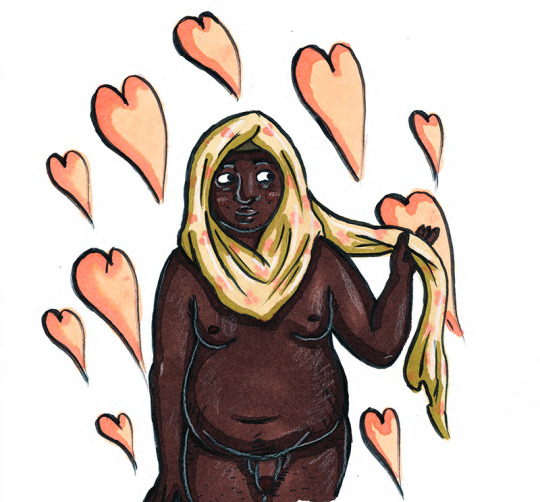
“Not being alone in the struggle.”
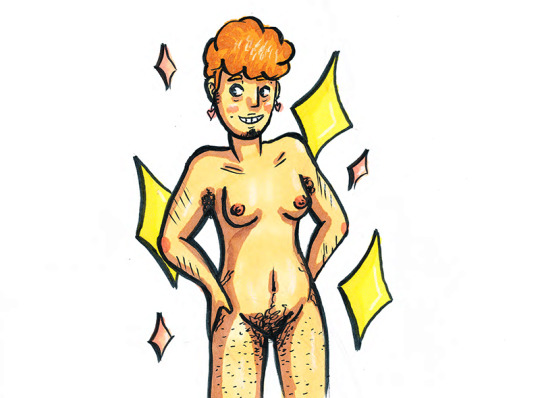
“I feel empowered by my trans identity.”
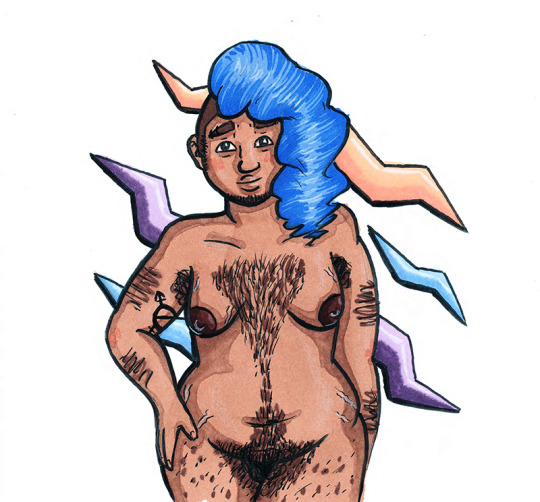
“The community and love.”
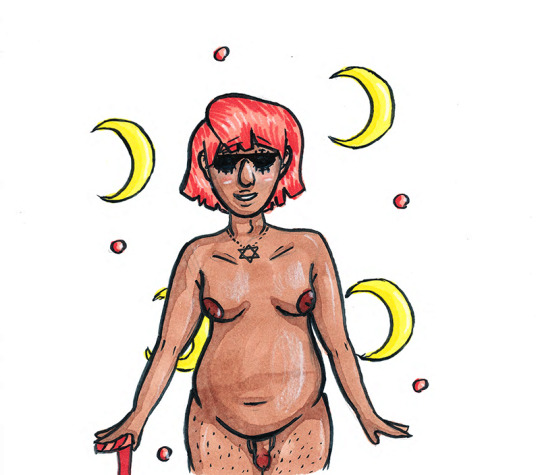
“Being trans has brought depth to my life. I see the world differently now.”
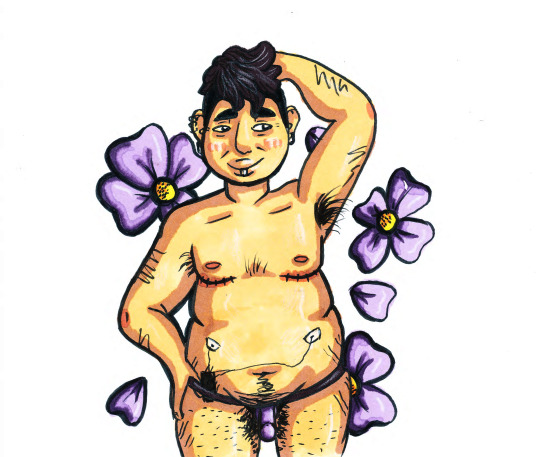
“Having to deal with less patriarchal nonsense in partnerships and friendships.”
6 Transgender Musicians
By Kathryn D.
For this project I decided to do some research on transgender musicians. It is important to note that the definition of transgender that I am using is the one that encompasses much more, as agender, two-spirit and non-binary individuals are included here. This list is not comprehensive, but my hope is that it may inspire and encourage folks to listen to some of these artists or find others on their own.

Shea Diamond is a transwoman from Flint, Michigan. In order to gain the financial means to start her transition, she committed a crime in 1999 and was sentenced to ten years in a male prison. She spent this time connecting with other transgender people and writing a song, “I Am Her”, which she later recorded in New York after being released from prison. You can read more about her here, on her website. Shea Diamond has a couple songs on Spotify and YouTube.

Angel Haze is a 25 year old singer and rapper who identifies as agender and pansexual. Haze is of African American and Cherokee descent, and was born in Detroit, Michigan. Haze has appeared alongside Nev Schulman as a co-host on MTV’s Catfish, and was nominated on MTV’s Video Music Awards for Best Video with a Social Message in 2014, and as an Outstanding Music Artist by GLAAD Media Awards in 2015. You can follow their social media pages by visiting their website. Check out more of Haze’s music on Spotify.
Lucas Silveira (The Cliks) – Savanna

Lucas Silveira is a 38 year old singer, songwriter and guitarist from Toronto, Canada. He is a transgender male who came out in 2004 to close family and friends and later began hormone replacement therapy in 2010. His primary genre of focus is now rock, but he has experience with folk music as well. He has published several articles on his transgender identity, and has discussed bullying and the importance of supporting transgender people across the globe (source). You can listen to The Cliks on Youtube and Spotify.

Shawnee Talbot is from Toronto Canada, and identifies as a two-spirit lesbian. She is a Canadian Mohawk singer with a powerful voice, and she has performed in both Canada and the U.S. She has even appeared on the Disney channel, and sung alongside Lady Gaga (source). One of her songs, “Mirror Me” focuses on her personal struggle with identity. You can check out her Soundcloud, bio, and merch on her website.
(source)
Cash Askew (Them Are Us Too) – Eudaemonia

Cash Askew was a 22 year old transgender woman who created music with her friend, Kennedy Ashlynn, in their band, “Them Are Us Too”. Cash passed away in the 2016 Oakland Ghost Ship fire, and has been sorely missed by her friends, family and fans. As a teen, Cash found herself drawn to the new wave and goth aesthetic, mostly because she liked the expression of androgyny. These things influenced her and helped her discover her identity and grow comfortable within herself (source). You can listen to “Them Are Us Too” on Spotify and Youtube.

Laith Ashley is a transgender male model and pop singer. He has appeared on various magazine covers and was one of the first transgender male models to be featured in a national campaign. Although he came from a religious family, his parents were supportive of his choice to transition and encouraged him to be himself (source). Currently, he only has two songs on Spotify.
I gathered these artists from a couple articles, this one from PBS and another one from Billboard.








